You might think the Honda Elevate is a classic case of too little, too late, and it wouldn’t be completely unfair to say so. Why? For the simple reason that it’s 2023, and the Elevate doesn’t get a turbo engine or a full hybrid powertrain on offer. Not to mention, it’s not the most feature-loaded SUV either.
However, if you look beyond brochures and clever marketing tactics of carmakers these days, you will realise there’s a catch here. You see, a lot of buyers in mid-size premium SUV space don’t care much about powerful turbos or super-efficient hybrids. They care about getting the best value for their money. A case in point is the Hyundai Creta. For the past six months or so, it has been on the market without a turbo petrol engine, and yet it’s the segment bestseller with around 14,000 units sold monthly. Sure, diesel still contributes to its sales, but it seems that the average buyer doesn’t care much about the absence of a punchy turbo petrol.
The Kia Seltos tells a somewhat similar story. While it gets both a 1.5-turbo and a 1.5-naturally aspirated (NA) petrol engine, it’s the latter that is the mainstay of the Seltos petrol range. And the simple reason that it’s much more affordable than its turbo counterpart.
Then, there’s the Toyota Urban Cruiser Hyryder or Maruti Suzuki Grand Vitara. Both get mild hybrid and strong hybrid powertrain options, but it’s the former, given its affordability, that, reportedly, brings more sales volume.

This brings me back to the Elevate. I think that instead of chasing headline figures or playing the game of top trumps, Honda has taken a strategically smart approach by offering an SUV that’s well and truly meant for the masses. But is that really the case – have they really hit the nail on the head with the Elevate?
To determine the best no-frills family SUV that gets all the basics right, we conducted a comprehensive comparison test featuring the 1.5 NA derivatives of all the aforementioned SUVs. To simplify the process, we identified several critical parameters that an average SUV buyer looks for. Every SUV on the list was awarded points, and in the end, we tallied up the scores to pick a winner. As simple as that!
Design
All four SUVs here appeal to different tastes, but let’s try and pick a winner just for the sake of this comparison. In my opinion, and that of many of my colleagues, the Seltos is the best-looking SUV of the bunch. And not only because it’s the newest product on the list but also because it’s the only vehicle here that nails every aspect of its design. It’s premium, aspirational, good-looking, and sporty. It’s worth noting that the 1.5 NA engine is not available with the top-spec GTX or X-Line trims – the highest trim you can find it in is the mid-line HTX, which doesn’t get 18-inch alloys, dual-tone paint options, or a sporty body kit. Despite this, the Seltos is a stunning SUV – one that grabs the most eyeballs.
Choosing between the Creta and the Hyryder for the second spot is a challenging task indeed. Sure, the latter, with its upright and more butch stance, is more SUV-like, but the Hyundai is no wallflower either. In fact, it would be fair to say that the Creta’s design has aged well over the years. Despite being the oldest product here, the Creta still looks quite attractive. However, given how common Cretas are on our roads, it lacks that sense of exclusivity. And, perhaps, for that reason, the Hyryder gets my vote for the second spot in the design category.
This leaves us with the Elevate, which is a bit, well, let’s say, uninspiring. Not saying it’s ugly or unimaginative, but it doesn’t evoke any emotional response. It’s more of a run-of-the-mill SUV, with a fairly conservative and unexciting design. It does claim some bragging rights, given that it has the highest ground clearance (220mm) and longest wheelbase (2,650mm) here. These factors, however, do little to improve its image. Consequently, it takes the bottom spot in terms of design.
Also read: autoX Awards 2023: Honda Elevate Performance, Quality and Value for Money Ranked
Interior & Fit-&-Finish
Another category, another challenge. This time, the challenge is to pick a clear winner between the two Korean siblings – the Seltos and Creta. While they may well be the same vehicles underneath, the interiors look completely different, and yet, they are the most premium on the list. Be it the dashboard layout, seats, stitching, general fit-and-finish, or touch-and-feel of the components, the Koreans are a notch above both the Japanese on the list. So, let’s call it a tie.
With the Hyundai and Kia tying for the top spot, the Elevate takes the second place. The fit-and-finish levels are satisfactory, and everything feels solid inside. The top-spec ZX variant on test here comes with a dual-tone black and brown cabin with a soft top dash, which feels premium and sturdy. While the dashboard design is simple and practical, you can’t really call it boring or outdated. In short, the Elevate will appeal to those who like clean, practical, and clutter-free designs. That said, the cabin has a lot of hard plastic bits, especially on the doors and lower part of the dashboard. The roof liner is of sub-par quality compared to the Koreans, and the manually operated sunroof shade is a bit flimsy.
The Hyryder suffers from a similar problem. The cabin is full of hard, shiny, and flimsy plastic bits, which means that it’s not quite as premium as the Koreans. The dashboard, in particular, appears quite busy – in fact, the busiest of the bunch – featuring multiple layers of design elements, which come across as a bit cluttered. The main problem is that a lot of the components – the AC controls, buttons, knobs, stalks, and more – have been lifted from smaller Maruti Suzuki cars, like the Baleno, Glanza, and Brezza. Not to mention, the dark black theme in the V Neodrive trim can trigger a sense of claustrophobia.
The Hyryder’s fit-and-finish levels, however, are on par with the Elevate’s, if not with the Seltos’ and Creta’s. And just like the Honda, the Hyryder also covers all the bases in terms of convenience, comfort, and practicality, and feels quite sturdy too.
Creature Comforts
In terms of features and creature comfort, all four vehicles here are decently kitted out. However, it’s worth pointing out that the Seltos’s top-spec trim is not available with the 1.5 NA engine, meaning you don’t get all the bells and whistles that you get with the facelifted version.
If I had to pick a winner here, it would be the Creta. In terms of feel-good-factor and convenience features, it’s hard to beat the Hyundai. The top-spec SX (O) variant comes fully loaded with features like a panoramic sunroof, a 10.25-inch touchscreen, driving modes, paddle-shifters in the CVT version, full-LED headlamps, and electro-chromic IRVM. Now, while most of these features are available with others on the list as well, the Creta has more tricks up its sleeve – for example, it’s the only SUV here to get an electrically adjustable driver’s seat, electronic parking brake, and ventilated front seats. It’s also the only one on the list that packs a premium Bose audio system. All these features undoubtedly make it a more premium offering.
Now, this doesn’t mean that the Creta is perfect, for it does miss out on some features. For instance, there’s no wireless Apple CarPlay / Android Auto connectivity – although, surprisingly, the lower trims with an 8-inch touchscreen get this functionality, Plus, there’s no 360-degree camera either, and the quality of the rear-view camera is sub-par at best.
The Elevate may not have class-leading features like the Creta, but it is well-equipped nonetheless. The touchscreen infotainment is brilliant and is of better quality than that of the Creta. It also gets wireless connectivity for Apple CarPlay and Android Auto, along with a wireless phone charger. The lack of ventilated seats and panoramic sunroof will deter some buyers, but the Elevate makes up for the lack with its ADAS features, such as Lane Keep Assist, Automatic Emergency Braking, Adaptive Cruise Control, and Auto High Beam. It also has a blind-spot camera. None of the other vehicles here come with these features – the Seltos gets ADAS only in its top-spec variant.
I think that Honda could have added more creature comforts to the Elevate, given the segment it competes in. However, if we talk about the ‘basic needs’, the Elevate ticks all the boxes and then some, especially at its price point.
The Hyryder’s top-spec ‘V’ variant does come with a mild hybrid powertrain, but it doesn’t get all the features that are offered with the same trim of the strong hybrid version. For instance, it doesn’t get ventilated seats, a heads-up display, and a wireless phone charger – all of which are available in the strong hybrid version. That said, the Toyota also comes loaded with features and equipment. Its 9-inch touchscreen offers the best resolution and touch response, and it’s the only SUV here that gets a 360-degree camera. The camera quality, however, is the worst – the display produces overly saturated and pixelated images. But in terms of functionality, it does a better job. There’s a panoramic sunroof, too, which adds to the premium factor. However, the liner / shade is wafer-thin, which means that the cabin can heat up quite easily on a sunny day.
The 1.5 NA Seltos, available only in the mid-spec HTX variant, may not match the Creta in terms of creature comforts, but it gets decent features, like a panoramic sunroof, a 10.25-inch HD touchscreen, which is crisp and intuitive to operate, and even a digital driver display – which isn’t the same as top-end versions – that looks and feels modern. Plus, it’s the only vehicle here that comes with dual-zone air conditioning.
Also read: 2023 Kia Seltos SUV Review: Taking the Fight to Hyundai Creta and Maruti Suzuki Grand Vitara
Space, Practicality & Boot
Given that the Elevate has the longest wheelbase, it’s no surprise that it feels the most spacious. Both the front and rear seats of the Honda are as comfortable as a sofa. At the back, the Elevate’s seats are slightly reclined as compared to the upright seating of the other three SUVs here. The space management inside is also the best. However, the under-thigh support of the seats is not that great, which may cause a problem during long road trips. It gets rear AC vents, but there’s no USB port, which is a bit of a downer.
The Creta and Seltos, once again, feel the same in terms of cabin space and rear bench comfort. The legroom is decent, albeit not in the same league as the Elevate, but the upright seating and good under-thigh support means that you can sit comfortably for long periods. The Seltos and Creta also get window blinds – a small but very thoughtful touch, which enhances the overall interior experience. The Creta, in fact, also gets neck pillows for rear seat passengers, adding to its overall sense of comfort.
The Hyryder isn’t the most spacious in the back. The seating is upright, but the legroom is a bit constricted. The same goes for the headroom – taller passengers may feel a bit claustrophobic. The seats are comfortable and nicely contoured to offer adequate support. However, because there’s an AWD version of the Hyryder on offer, there’s a prominent transmission hump in the rear, which eats into the middle passenger’s legroom.
The Hyryder also has the smallest boot here (373 litres). The Creta and Seltos are identical at 433 litres, while the Elevate’s boot is the biggest at 458 litres.
Engine, Gearbox & Fuel Efficiency
Let’s begin with the Elevate, which is equipped with the City’s tried-and-tested 1.5-litre VTEC engine. It produces around 119bhp and 145Nm, making it the most powerful engine of the lot. Now, in terms of performance, it is a typical VTEC motor. It delivers power in a very linear fashion and provides a noticeable kick post 4,500 – 5,000rpm. That said, it has a pretty good low-end torque, so the driveability is impressive. The only problem with this engine is that it feels a little gruff in comparison to all the other powertrains on the list.
The great thing about this engine, however, is that it loves to be thrashed – a characteristic common to VTEC motors. Of course, in terms of outright performance, it’s no match for the turbo-petrol engines, but it is definitely the liveliest here on the list. As for the transmission, we tested the CVT version, and suffice it to say, it complements the engine quite well with its seamless operation, making driving effortless in all conditions. Of course, it’s not a sporty transmission, so shifts aren’t lightning fast, but for normal driving, this engine and gearbox combo is near perfect.
The Creta and Seltos share the same 1.5-litre NA engine, and both the vehicles on test here were equipped with a CVT transmission. This engine is rated at 113bhp and produces 144Nm of torque. The performance, as a result, is quite adequate. In fact, I would say that in terms of drivability, it does a slightly better job than the Honda’s VTEC motor because of its slightly better low-end poke. The power delivery is linear throughout, meaning there’s a nice progression in the way it builds pace.
The best part about this powertrain is its refinement and NVH levels. You will hear absolutely nothing inside the cabin while driving these cars at a leisurely pace. A heavier right foot results in some noise filtering into the cabin, but it’s not as coarse as the Honda. The CVT transmission is flawless and as good as the Honda’s. That said, I felt the Kia’s transmission to be the smoothest while using manual mode / paddle shifters – the Creta’s transmission, and even the Honda’s, felt a bit jerky.
The Hyryder we tested was powered by a 1.5-litre engine, with mild-hybrid technology, making it technically the most advanced powertrain on the list. It is, however, good for only 101bhp and 137Nm, meaning it is the least powerful unit here. At idle, this engine is the most refined unit of the four. And even when you put the pedal to the metal, the NVH levels are exemplary, and this matters because you really have to wring this motor to extract performance. While the low-end is the weakest, the engine doesn’t feel strong in the mid- and high-revs either. It just about does the job. Like the Honda’s motor, it loves and enjoys being revved hard, but it lacks the kick that you get from the VTEC motor in the top end of the rev band.
We tested the manual version of the Hyryder (with optional AWD) for this comparison, which is what I would prefer over the 6-speed AT, which is a bit mediocre based on my previous experience. It tends to shift to higher gears in a hurried fashion and takes time to downshift in kickdown since it is tuned for fuel efficiency. The 5-speed manual transmission in comparison is a joy to use. The shifts are slick, the clutch is light, and the gear lever has short throws, which means that you really enjoy working the gearbox.
In terms of fuel efficiency, it’s the Toyota that stands out – during the test, it returned a phenomenal 17km/l (mixed conditions), which was the highest of all. The Elevate was second at 15km/l, while the Creta and Seltos turned out to be the most gluttonous of the lot, at 12 – 13km/l.
Handling & Ride Quality
The Elevate, first. I initially thought that it would be a dull handling machine, given that it’s a family SUV, and a Honda at that. But, honestly, it surprised me with its poise and driving dynamics. In fact, it feels more like a hatchback than an SUV. You sit quite low in the driver’s seat, with your hands on that steering that feels quite meaty to hold. You also get a nice view of the bonnet, thanks to its prominent powerdome. This old-school touch makes driving an involving affair.
The suspension setup is spot-on. It’s neither overly soft nor excessively firm – it is beautifully balanced and feels perfect around bends. In fact, the Elevate remains stable and planted throughout, owing in part to the rigidity of the platform. It feels light and agile unlike the other SUVs here, making it more playful and fun. The steering, too, is well-weighted and offers good feedback.
The ride quality is supple for the most part. It is a bit noisy and feels firm at low speeds, but in the larger scheme of things, there’s little to complain about – it soaks bumps and undulations just fine. Its high-speed stability is impressive as well, as it always stays glued to the road.
The Elevate is closely matched by the Seltos in the handling department. The steering offers good feedback, and the front end feels nicely tied down. Plus, it grips really well. It does, however, feel a little heavy during quick direction changes and lacks the seat-of-the-pants feel of the Honda. The Kia’s suspension is the stiffest of the lot, which makes its ride quality a bit jittery at low speeds.
The Creta, on the other hand, is the Seltos’ laid-back twin, which means that it is tuned for comfort. As a result, there’s more body roll and less driver involvement, but, at the same time, it feels plusher and more absorbent while tackling road imperfections. The Creta isn’t a lousy or a sporty handling machine – it’s neutral. And that’s exactly what the average customer wants in this segment.
Both the Elevate and Seltos suffer at low speeds – i.e. over speed breakers and potholes – but the Creta dismisses them with ease. That said, its suspension may get caught off guard by sharp and big bumps if you don’t slow down in time.
If comfort or ride quality is your top priority, the Hyryder will impress you the most. It’s simply brilliant how this SUV flattens bumps, undulations, and every road imperfection that comes in its path. However, this comes at the cost of a bit of a compromised handling. The Hyryder isn’t the sharpest tool in the shed and lacks the finesse or body control of the Elevate and Seltos. The steering feels lifeless, and there’s a lot of body roll. I would still rate it higher than the Creta in terms of handling because just like the Honda, the Hyryder’s platform feels light on its feet. So, despite the body roll and light and vague steering, it’s nimbler than the Creta.
Safety
The Seltos & Creta come with six airbags as standard. And given the fact that the Verna scored a full 5-stars in the recent Global NCAP crash tests, we’re hopeful that these SUV derivatives are likely to ace the safety tests, as and when they undergo the GNCAP knife. The Elevate and Hyryder come with dual airbags as standard, albeit the top-end variants that are on test here get six airbags. You can say that all four SUVs here are evenly matched in terms of safety – and that’s a great thing. However, I would give the Honda an extra point because of ADAS – it works well as an assistance system and isn’t as intrusive or erratic as some of the other ADAS systems that we have tested in India.
Verdict
The Elevate offers the best bang for your buck with its fuss-free practicality, balanced ride-and-handling, engine performance, safety/ADAS features, and bullet-proof Honda reliability. Plus, it’s an excellent value-for-money proposition. The Creta, on the other hand, feels the most rounded and the most premium product of the lot, which offers virtually everything to those looking for comfort, premium features, and convenience. The Seltos does more or less the same things as the Creta, albeit with a sportier approach. Lastly, the Hyryder is for those who prioritise fuel efficiency, ride comfort, Toyota’s brand value, and a rugged SUV design – there’s even AWD on offer – above everything else.
All said and done, in the final scores, it’s the Elevate that emerges as the winner, but only by a whisker. Having said that, it’s fair to say they all have their strengths and appeal to different customers with different preferences, making them winners in their own rights. They all have something valuable to offer, and one that benefits the most is you – the buyer.
- Score Sheet
| Model | Design | Interior | Features | Powertrain | Handling | Ride Quality | Fuel Efficiency | Space & Practicality | Value- for-Money | Total |
|---|---|---|---|---|---|---|---|---|---|---|
| Elevate ZX | 1 | 2 | 3 | 4 | 4 | 2 | 3 | 2 | 4 | 25 |
| Creta SX(O) | 2 | 4 | 4 | 2 | 1 | 3 | 1 | 4 | 2 | 23 |
| Seltos HTX | 4 | 3 | 1 | 3 | 3 | 1 | 2 | 3 | 1 | 21 |
| Hyryder V | 3 | 1 | 2 | 1 | 2 | 4 | 4 | 1 | 3 | 21 |
*Points awarded based on rankings in each category, with the top ranked vehicle scoring 4 points and the lowest ranked getting a single point.
- Honda Elevate ZX
- Hyundai Creta SX (O)
- Kia Seltos HTX
- Toyota Urban Cruiser V NeoDrive
Fuel: Petrol
Engine: 1,498cc / In-Line 4 / VTEC
Transmission: CVT / Front Wheel Drive
Power: 119bhp @ 6,600rpm
Torque: 145Nm @ 4,300rpm
Price: ₹16 Lakh (Ex-Showroom)
X-Factor: A well-rounded family SUV that gets all the basic rights.
| Pros • Driveability • Ride & Handling | Cons |
Fuel: Petrol
Engine: 1,497cc / In-Line 4
Transmission: CVT / Front Wheel Drive
Power: 113bhp @ 6,300rpm
Torque: 144Nm @ 4,500rpm
Price: ₹17.53 Lakh (Ex-Showroom)
X-Factor: Despite being the oldest, the Creta leads the way in terms of creature comforts, premium features, and practicality.
| Pros • Premium & feature-loaded interior • Refinement | Cons |
Fuel: Petrol
Engine: 1,497cc / In-Line 4
Transmission: CVT / Front Wheel Drive
Power: 113bhp @ 6,300rpm
Torque: 144Nm @ 4,500rpm
Price: ₹16.60 Lakh (Ex-Showroom)
X-Factor: Stylish looks, sporty dynamics, & contemporary interior is what sets the Seltos apart from the rest.
| Pros • Driving Dynamics • Refinement | Cons • Ride quality |
Fuel: Petrol
Engine: 1,462cc / In-Line 4 / Mild Hybrid
Transmission: 5-Speed Manual / All-Wheel Drive
Power: 101bhp @ 6,000rpm
Torque: 137Nm @ 4,400rpm
Price: ₹17.34 Lakh (Ex-Showroom)
X-Factor: Butch looks, impeccable ride quality, & stellar fuel economy make the Hyryder a compelling proposition.
| Pros • Butch Design • Fuel Efficiency | Cons |



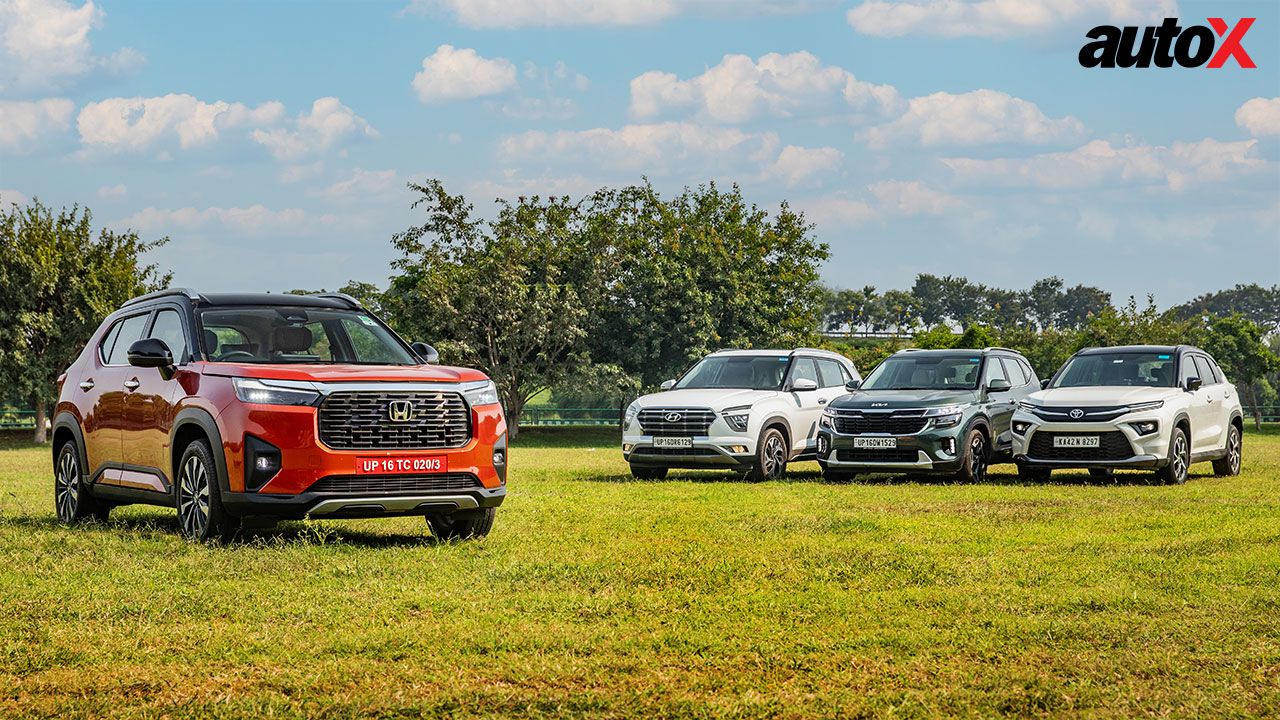

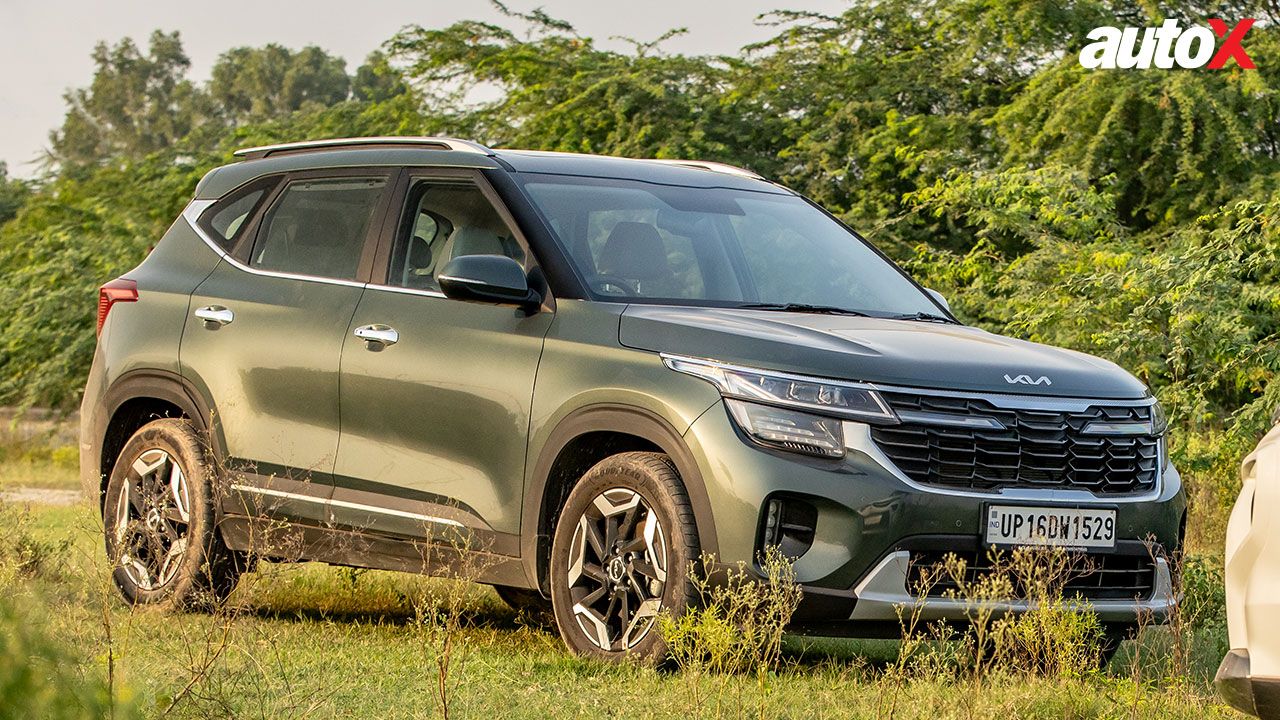




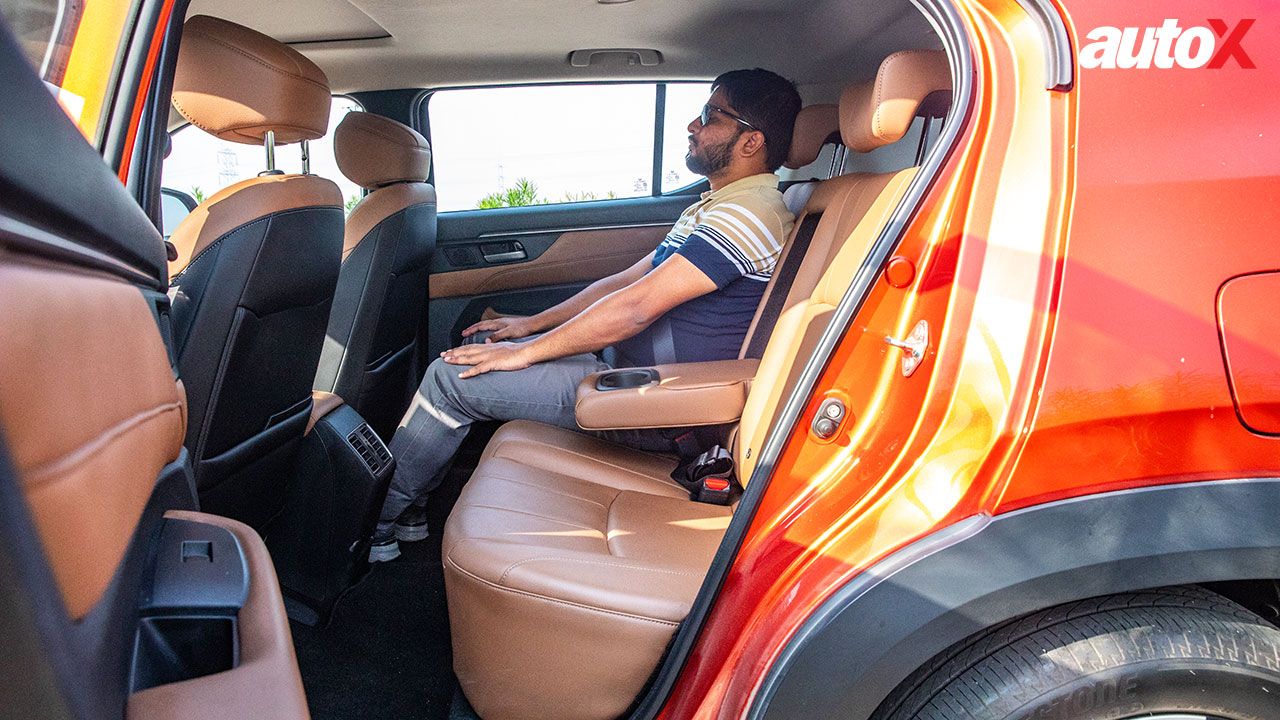
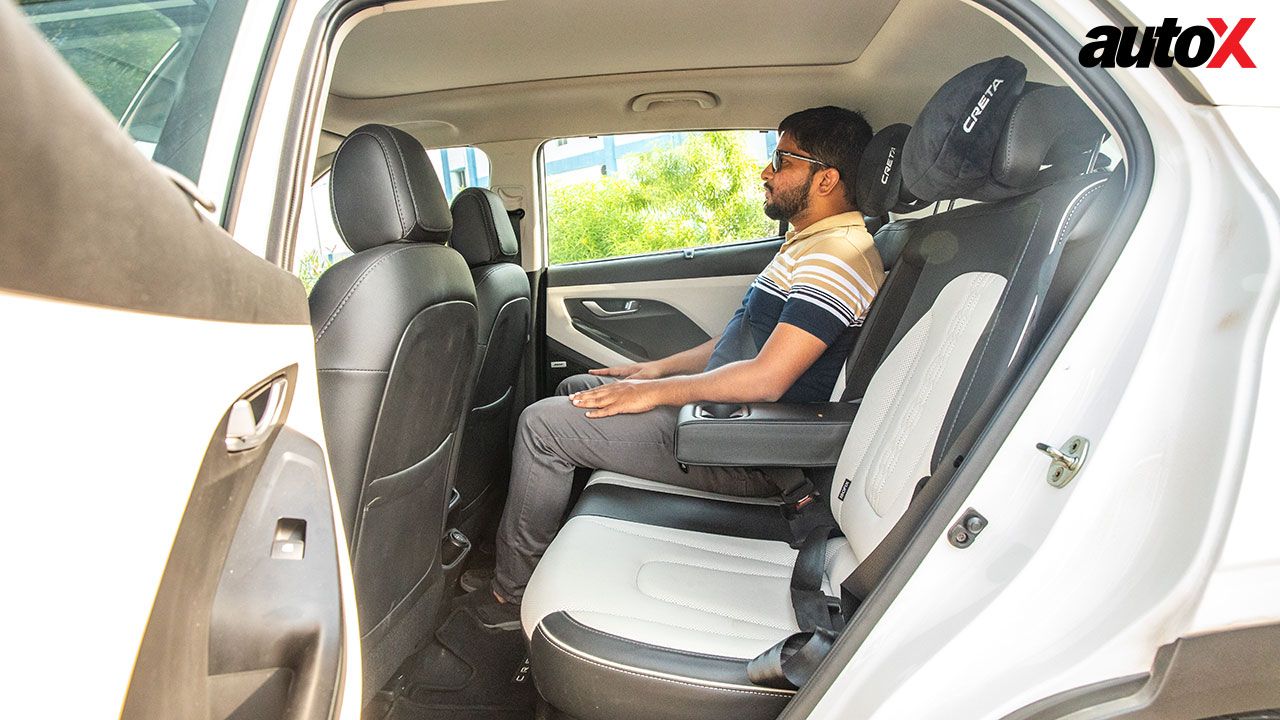
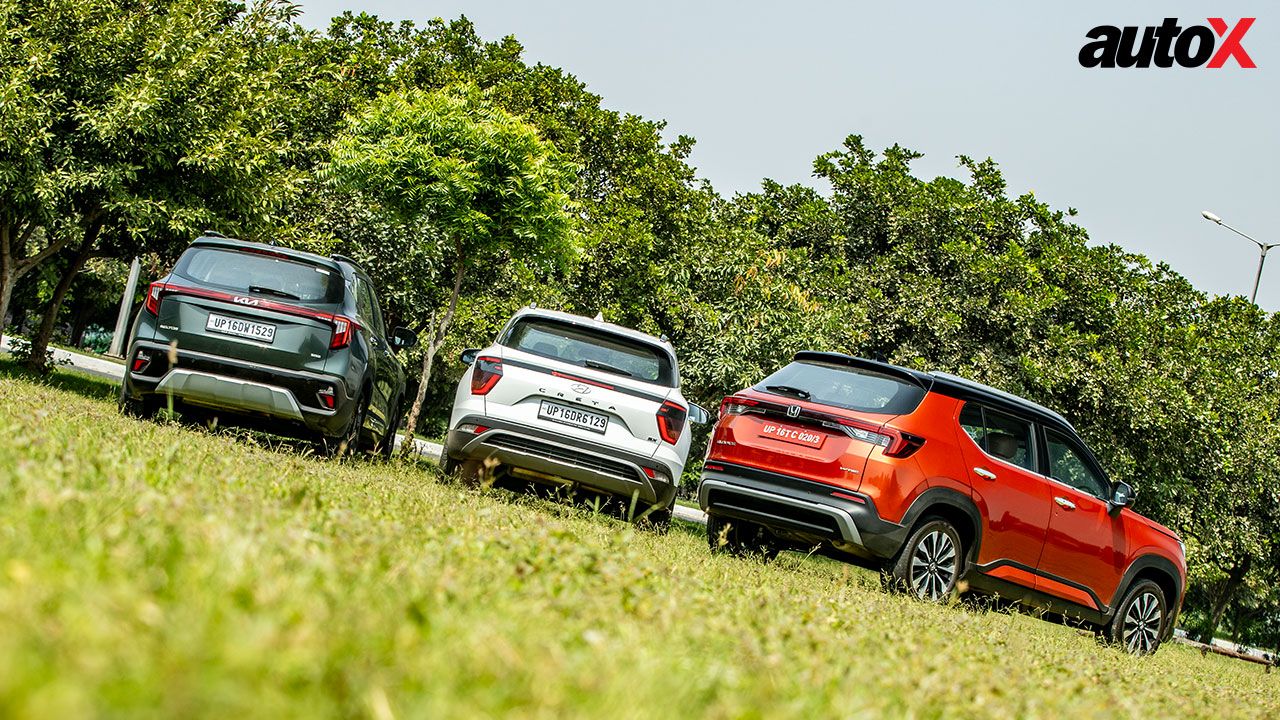

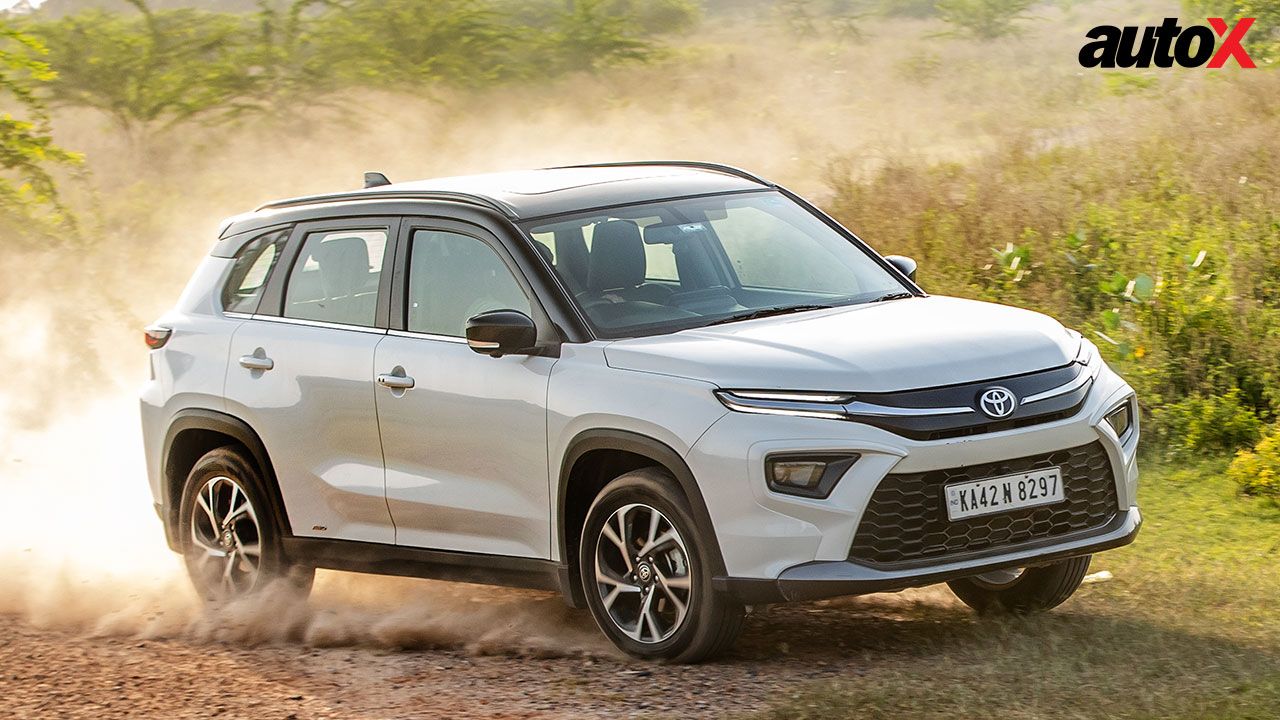
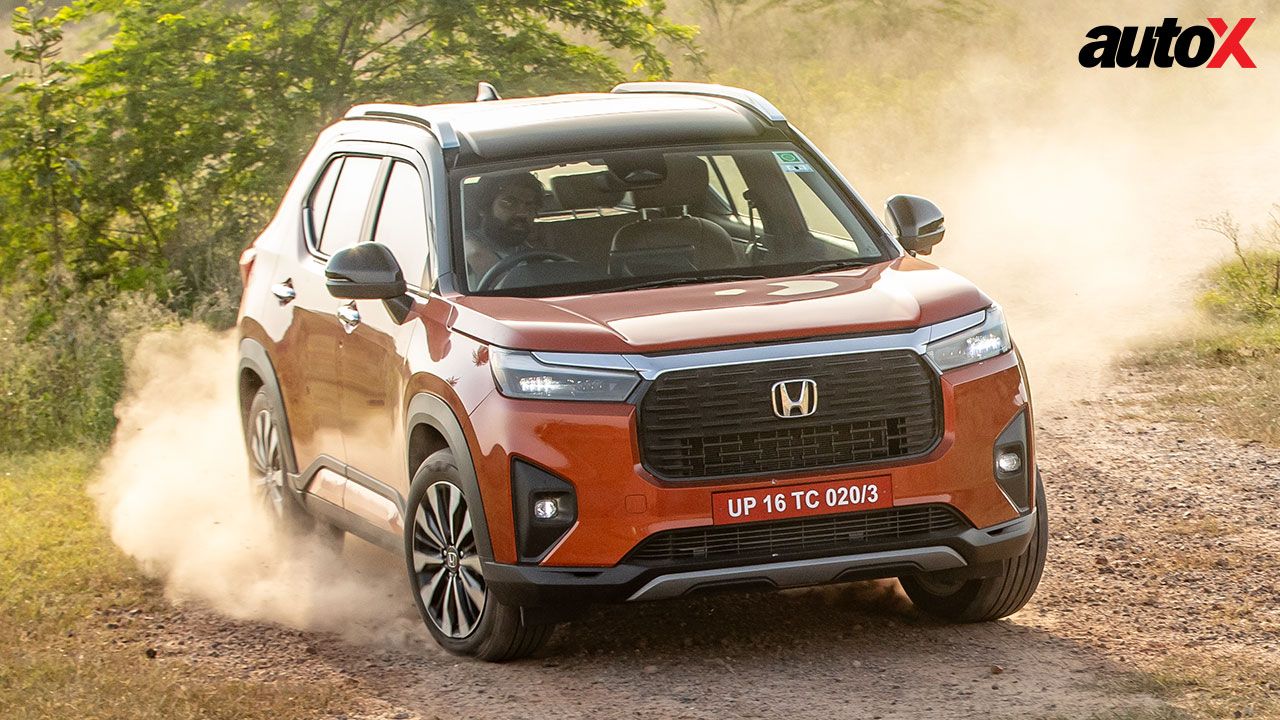
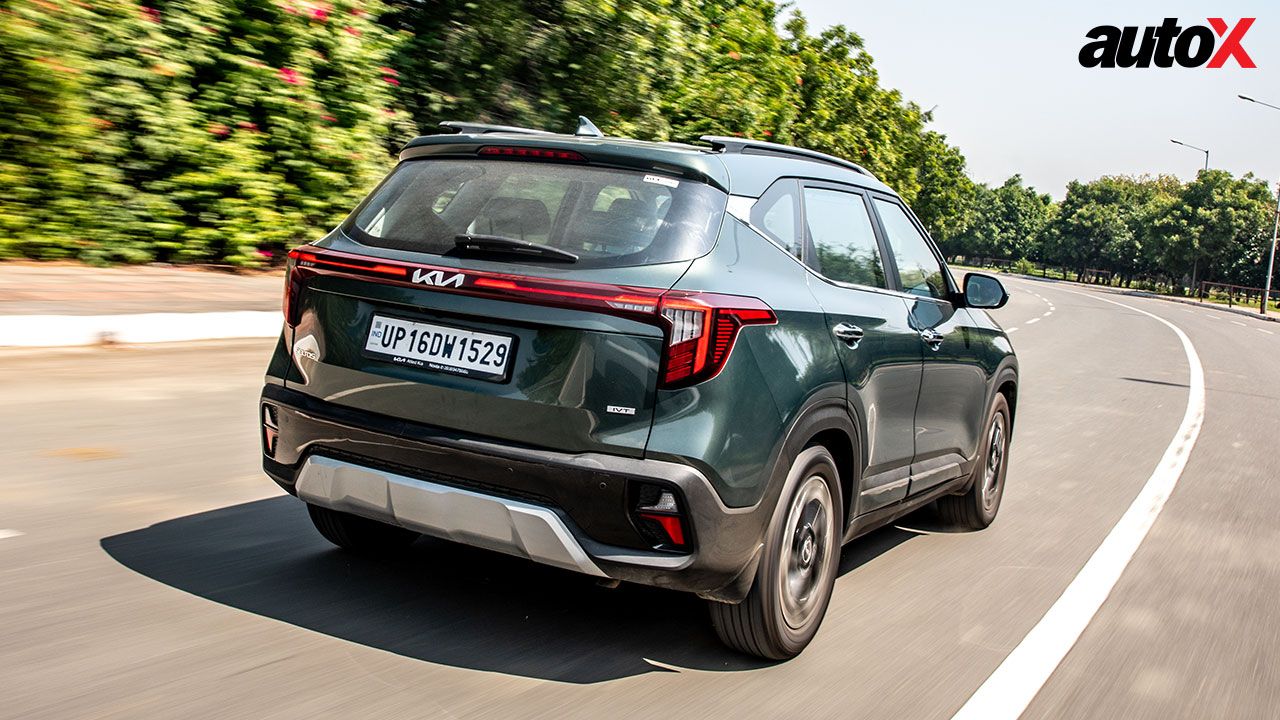















Write your Comment